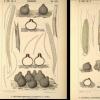
12-12-2025 18:39
Mirek GrycHello everyone.Macrofeatures similar to Mollisia b

09-12-2025 12:06
 Andgelo Mombert
Andgelo Mombert
Bonjour,Je recherche l'article concernant Hypobryo

07-12-2025 16:07
Arnold BüschlenHallo, ich habe in einer Moos-Aufsammlung (epiphy

08-12-2025 21:04
Mark Stevens"Hello everyone,I'm relatively new to microscopy (

08-12-2025 18:59
 Lothar Krieglsteiner
Lothar Krieglsteiner
.. found by a seminar-participant, I do not know t

08-12-2025 17:37
 Lothar Krieglsteiner
Lothar Krieglsteiner
20.6.25, on branch of Abies infected and thickened
Pleosporale on indeterminate dicot. stems
Enrique Rubio,
16-05-2012 17:02
What do you think about these small (up to 0.5 mm), gregarious, blackish, inmersed (suepidermial), glabrous, sessile and ostiolate (not compressed) pseudothecia that grew on indeterminate dicot. stems at 1600 m of altitude?.
The yellowish ascospores are persistently 5-septate, 6-celled, and the third cell are apically sligthly enlarged.
Many thanks in advance for your kindly help
Enrique
Huzefa Raja,
16-05-2012 17:06
Re : Pleosporale on indeterminate dicot. stems
Nice pictures. Seems to me it is a species of the genus Ophiobolus.
Enrique Rubio,
16-05-2012 17:13
Re : Pleosporale on indeterminate dicot. stems
But, what species?
Thanks Huzefa
Thanks Huzefa
Huzefa Raja,
16-05-2012 17:18
Re : Pleosporale on indeterminate dicot. stems
Hi Enrique
I am not sure-sorry. It is a large genus and the literature is quite wide spread.
Best
Huzefa
I am not sure-sorry. It is a large genus and the literature is quite wide spread.
Best
Huzefa
Huzefa Raja,
16-05-2012 17:25
Re : Pleosporale on indeterminate dicot. stems
Attached is a key that might help shed some light on the species epithet.
Enrique Rubio,
16-05-2012 17:37
Re : Pleosporale on indeterminate dicot. stems
Already I had read this paper, but without success...
Thanks!
Thanks!
Huzefa Raja,
16-05-2012 17:50
Re : Pleosporale on indeterminate dicot. stems
Sure, I will see if I can find any more papers on this genus.
Perhaps, you can send these picts to Robert A. Shoemaker in Canada, who has done some early work with this genus.
Best
Huzefa
Perhaps, you can send these picts to Robert A. Shoemaker in Canada, who has done some early work with this genus.
Best
Huzefa
Paul LEROY,
16-05-2012 19:58
Re : Pleosporale on indeterminate dicot. stems
Hello Enrique,
Je pense moi aussi que ce champignon est probablement un Ophiobolus bien que
les ascomes ne soient pas collapsés.Toutefois,dans ma documentation je n'ai aucun
spécimen qui correspond à ce que tu représentes. Ceci est intéressant et j'aimerais
bien que quelqu'un l'identifie. Il pourrait aussi être cherché vers Nodulosphaeria ou
Entodesmium mais certains caractères ne conviennent pas.
Amicalement
Paul LEROY
Je pense moi aussi que ce champignon est probablement un Ophiobolus bien que
les ascomes ne soient pas collapsés.Toutefois,dans ma documentation je n'ai aucun
spécimen qui correspond à ce que tu représentes. Ceci est intéressant et j'aimerais
bien que quelqu'un l'identifie. Il pourrait aussi être cherché vers Nodulosphaeria ou
Entodesmium mais certains caractères ne conviennent pas.
Amicalement
Paul LEROY
Björn Wergen,
16-05-2012 20:19

Re : Pleosporale on indeterminate dicot. stems
This one is not easy to identify, as I said via email. Macroscopically it could be necessary to look for "subiculum" hyphae and microscopically it is important to see what happens with the spores after leaving the asci (part spores?) and which cell is enlarged.
I cannot find any matching species.
regards,
björn
I cannot find any matching species.
regards,
björn
Enrique Rubio,
16-05-2012 20:40
Re : Pleosporale on indeterminate dicot. stems
I could have seen only some free ascospores out of the asci, and they were entire, no part spores.
Martin Bemmann,
16-05-2012 20:47

Re : Pleosporale on indeterminate dicot. stems
Hi Enrique,
another species that vanished from the screen is Leptosphaeriopsis acuminata (not listet by IF or MB but depicted by Berlese - see attachment-). But it still has mor septa in the spores.
Do you have Müller's work on Ophiobolus? Maybe it will not help much, I did not find a match to your find.
Regards
Martin
another species that vanished from the screen is Leptosphaeriopsis acuminata (not listet by IF or MB but depicted by Berlese - see attachment-). But it still has mor septa in the spores.
Do you have Müller's work on Ophiobolus? Maybe it will not help much, I did not find a match to your find.
Regards
Martin
Enrique Rubio,
16-05-2012 20:58
Re : Pleosporale on indeterminate dicot. stems
No Martin. I have not Müller's work.
Thanks!
Thanks!
Luc Bailly,
16-05-2012 22:32
Re : Pleosporale on indeterminate dicot. stems
Hello all,
I don't recognize Ophiobolus acuminatus in Enrique's sample. There's a shema of the spores in Ellis & Ellis, and it's quite clear: the enlarged cells are close to the middle, and the spores divide in two halves when poking out the ascus.
I found O. acuminatus in 2011 in a bog, on Cirsium palustre.
Cheers - LUC.
I don't recognize Ophiobolus acuminatus in Enrique's sample. There's a shema of the spores in Ellis & Ellis, and it's quite clear: the enlarged cells are close to the middle, and the spores divide in two halves when poking out the ascus.
I found O. acuminatus in 2011 in a bog, on Cirsium palustre.
Cheers - LUC.
Martin Bemmann,
16-05-2012 22:44

Re : Pleosporale on indeterminate dicot. stems
d'accord Luc...
Björn Wergen,
16-05-2012 23:41

Re : Pleosporale on indeterminate dicot. stems
O. acuminatus is one of the commonest fungi growing on dead Cirsium stems. I have examined it several times (until it had became boring). :D
THIS one is definitive not O. acuminatus.
I think Enrique's recolt is a new species, not yet described. That's all.
regards,
björn
THIS one is definitive not O. acuminatus.
I think Enrique's recolt is a new species, not yet described. That's all.
regards,
björn
Enrique Rubio,
17-05-2012 17:59
Re : Pleosporale on indeterminate dicot. stems
Clearly is not Ophiobolus acuminatus.
Thank you to all
Enrique
Thank you to all
Enrique
Mlcoch Patrik,
30-11-2016 21:47

Re : Pleosporale on indeterminate dicot. stems
This is possible something from genus Leptosphaeria. for example L. tenera agg. What to substrate?
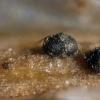
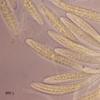
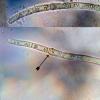
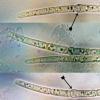
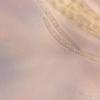
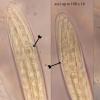
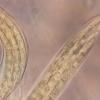
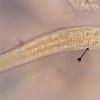
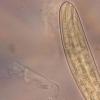
 1976-Ophiobolus-spp.-0001.pdf
1976-Ophiobolus-spp.-0001.pdf